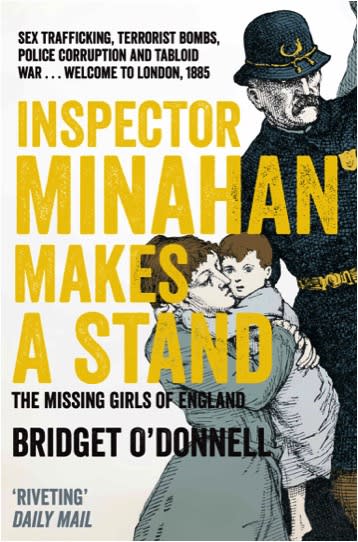
Charles Booth's 1880 Map of London Poverty and how it relates to Inspector Minahan's world.

In 1885, a leading British Socialist claimed that a quarter of Londoners lived in poverty. Charles Booth, a wealthy businessman from Liverpool, scoffed at the very idea and set out to prove the estimate wrong, by visiting every one of London's streets and describing its inhabitants in detail.
Unsurprisingly perhaps, Booth had to eat his words, calculating that it was actually around a third of Londoners who could be considered ‘poor' or ‘very poor'. On his 1889 Map of London Poverty, he coloured the capital's poorest streets in a dark blue or black. ‘Well-to-do Middle-class' streets were red, and the streets of the ‘Upper Middle and Upper-classes' were, naturally, painted a yellow gold.
Lurking behind the ‘West End's' myriad ‘well-to-do' and ‘wealthy' areas, Booth marked six blue/black patches of poverty. One of these was Lisson Grove in Marylebone, which housed the sprawling Armstrong family in a single room on Charles Street. In 1885 Mrs Armstrong enhanced the area's long-established, slum notoriety by (allegedly) selling her daughter Eliza to a passing ‘brothel-keeper' for £5. Partly perhaps, as result of the Armstrong case, a number of the worst streets – including Charles Street - were knocked down, rebuilt and renamed soon after the scandal, but pockets of poverty remained. Booth later described the families he found here as ‘friendly but ignorant', ‘savage rather than bad'.
Today the area retains its mix but in a much more modern and hotchpotch London way, with the 1970s Lisson Green Estate bordering the now gentrified older streets, which once enclosed the worst of the slums.
In Chelsea, home to both Inspector Minahan and the rich brothel-madam, Mrs Jeffries, the picture in the late 1880s was of a far more suburban, level mix, with most residents varying from ‘mixed - some comfortable, others poor' (pink) to ‘well-to-do' and ‘wealthy', rather like they do today. Nevertheless, the St. George Workhouse just off the Fulham Road still once loomed large, a black presence in a sea of easy pink, as if to warn Chelsea's denizens not to become too ‘comfortable'.
Uncover Untold Stories and Explore Historical Depths
Embark on a journey through captivating narratives and delve into the hidden corners of history with Bridget O'Donnell. Contact her today to unearth untold stories, engage in thought-provoking discussions, or explore collaboration opportunities that shed light on the past and resonate with the present.
Contact
Location
LondonOther website
www.davidhigham.co.uk/agents-dh/andrew-gordon